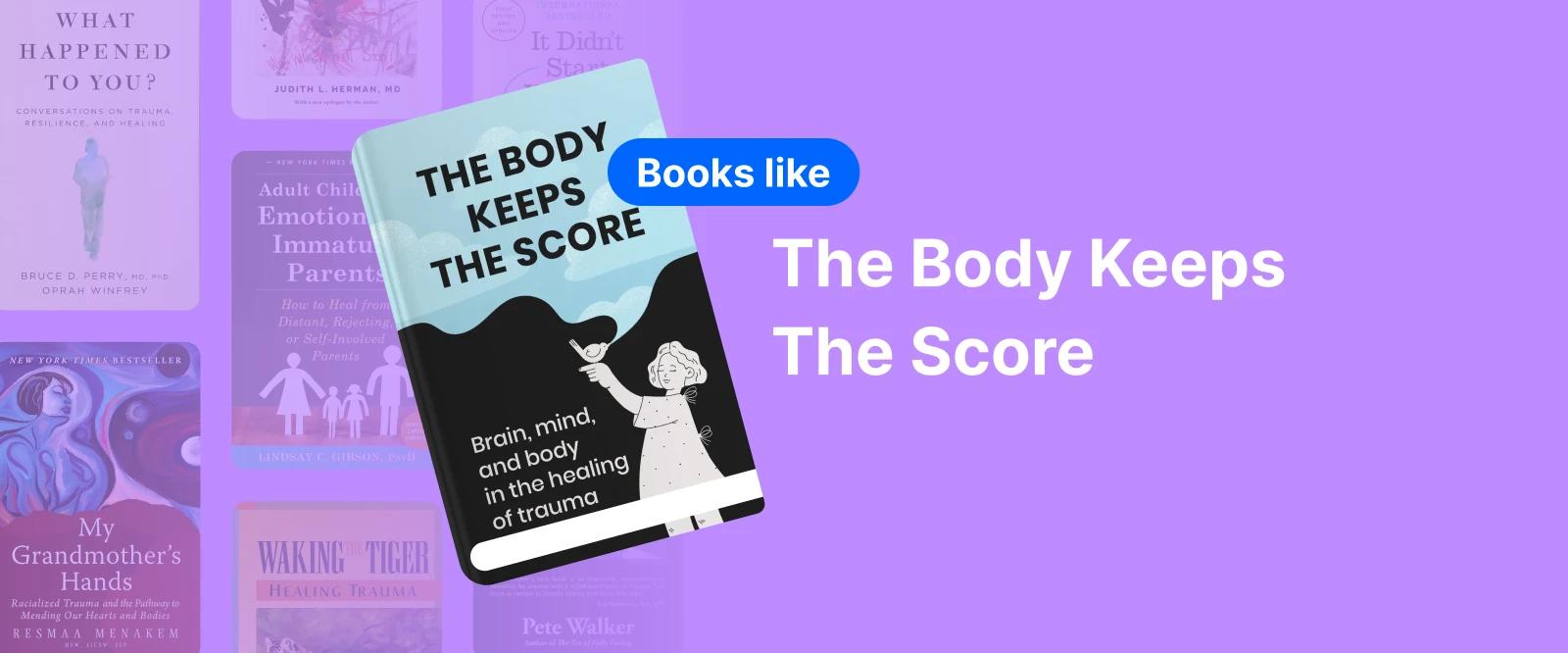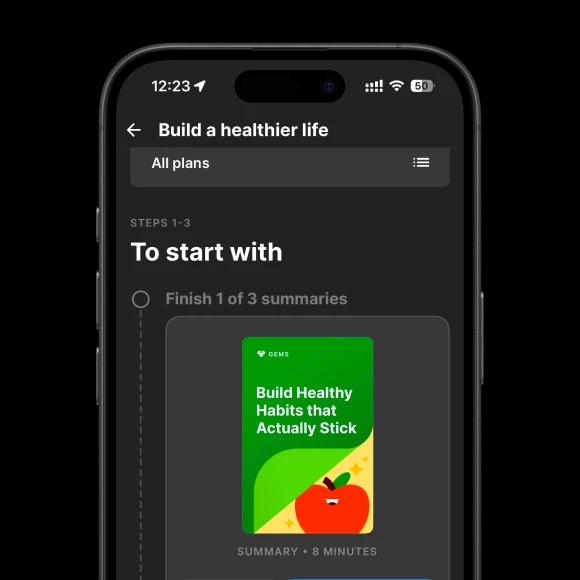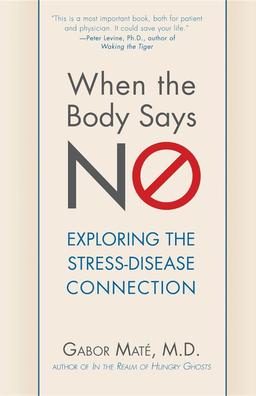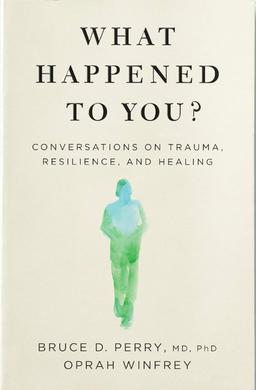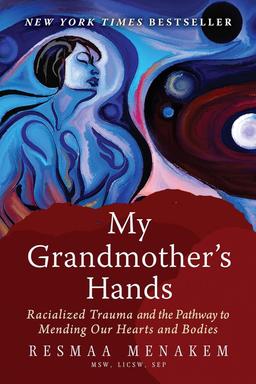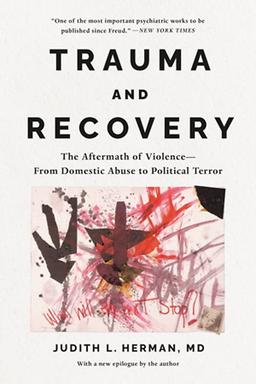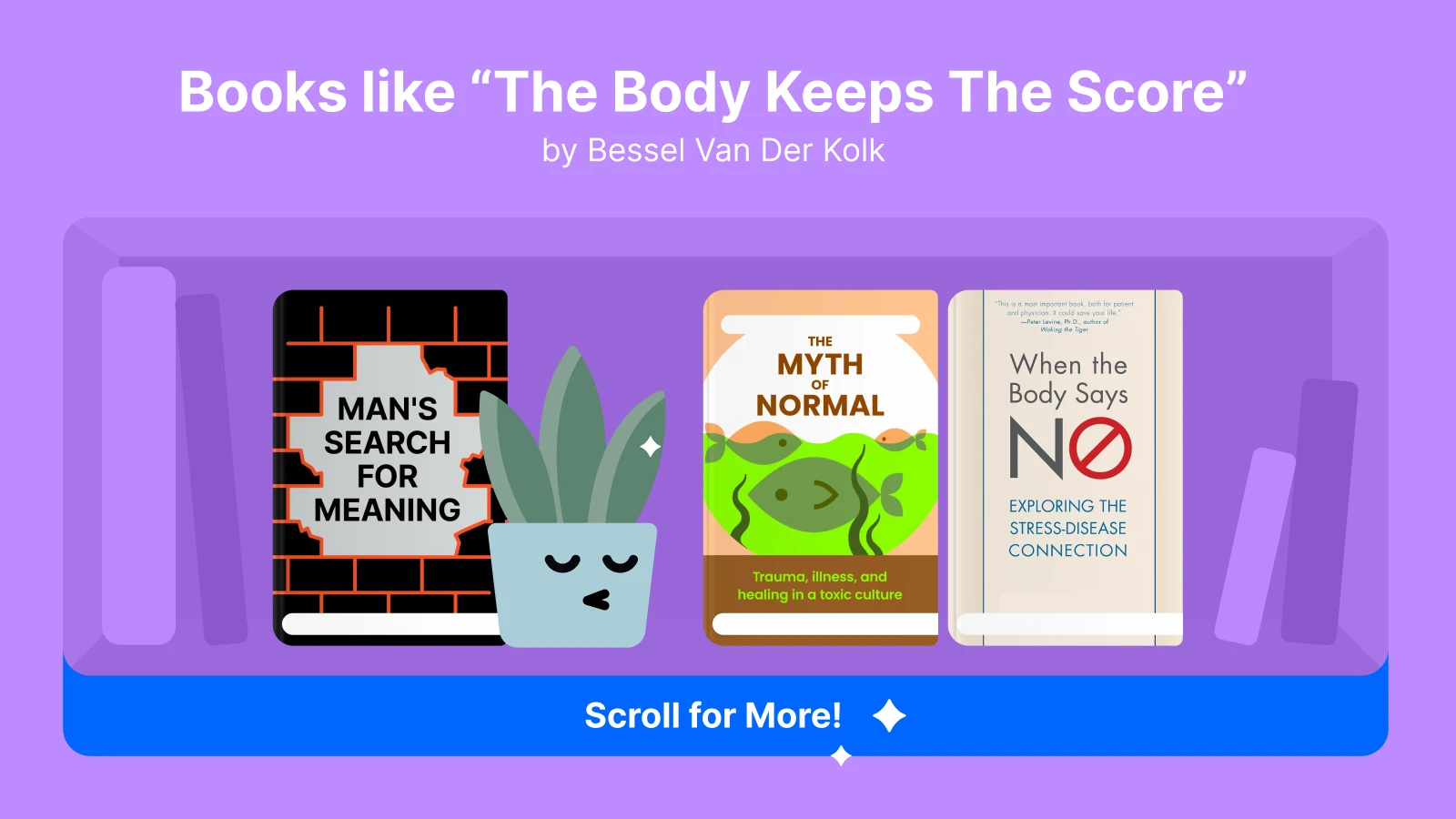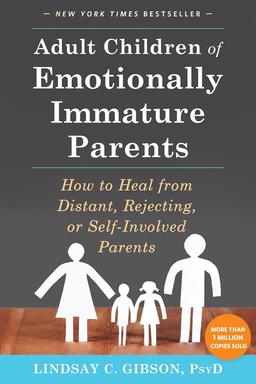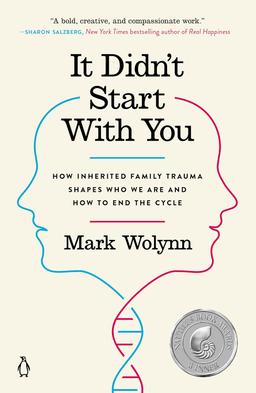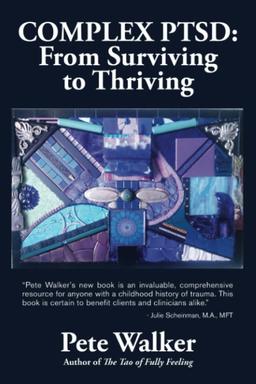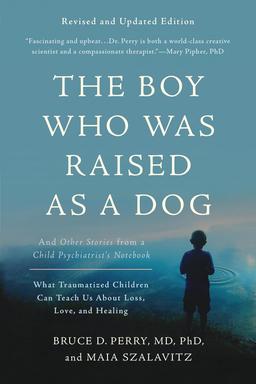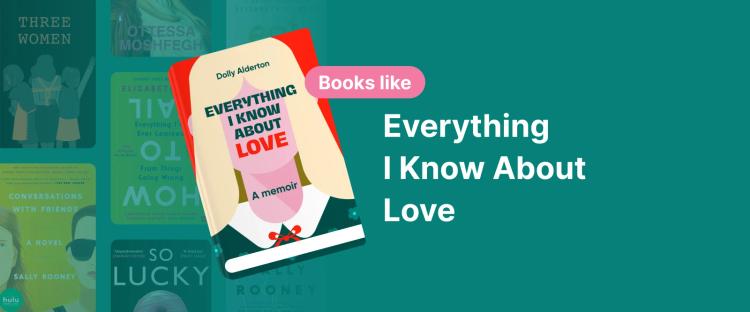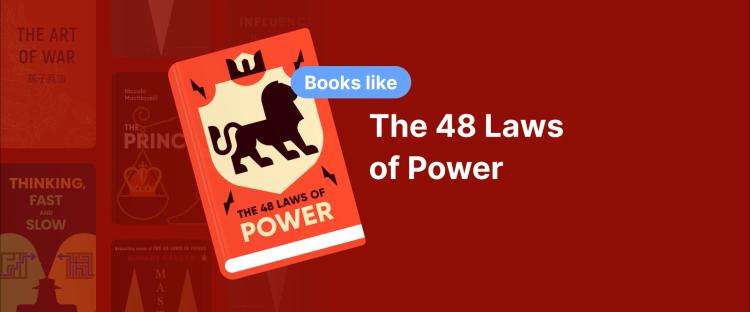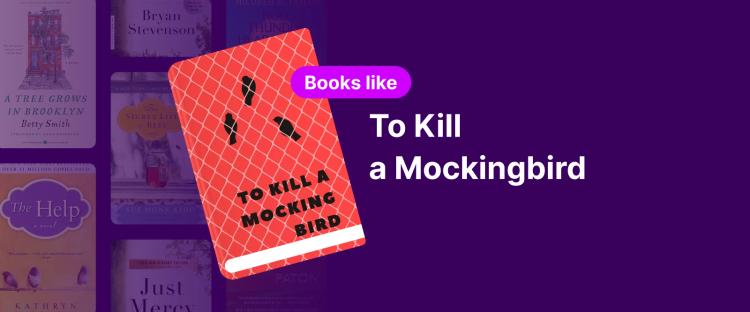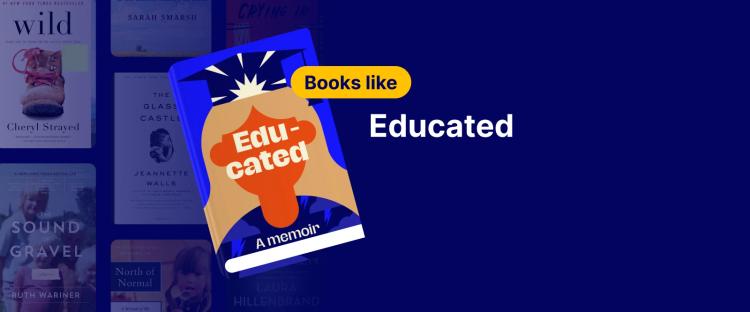Started your healing journey, but are now unsure of your next steps? Looking for additional advice is smart. You can learn more about the effects of trauma, healing, and the connections between your body and mind from books like 'The Body Keeps the Score.' And these 12 nonfiction titles will help you make sense of trauma and provide effective healing techniques.
A quick story reminder: 'The Body Keeps the Score' by Bessel van der Kolk is a groundbreaking book exploring how traumatic experiences impact our bodies and minds. Using neuroscience, van der Kolk shows that trauma alters how your body functions in addition to impairing your mental health.
Overall, the book shows how trauma affects everything from emotions to thinking by fusing research with personal experience. Want to learn more about healing, mindfulness, and trauma treatment without spending hours reading?
Headway makes learning on the go simple. With our 15-minute book summaries, you save time while investing in your growth. Whether you're cooking, routing, or simply relaxing, you can gain knowledge that promotes your personal development.
Download Headway to learn trauma recovery on the go!
Quick list: Six books similar to 'The Body Keeps the Score'
'Man's Search for Meaning' by Viktor E. Frankl — Frankl's observations from his time in a Nazi concentration camp provide an impactful look at how to find meaning and purpose.
'When the Body Says No' by Gabor Maté, MD — Maté helps you understand how the body retains trauma by examining the role that stress and unresolved emotions play in physical illnesses.
'What Happened to You?' by Oprah Winfrey and Bruce D. Perry — This book explores how early experiences shape who we are and provides practical advice on how to move past trauma.
'Trauma and Recovery: The Aftermath of Violence' by Judith Herman — A clear roadmap for violence survivors while examining the long-term effects of trauma.
'Waking the Tiger: Healing Trauma' by Peter A. Levine — The story explains how trauma is stored in the body and offers methods for letting it out through somatic experiencing.
'Complex PTSD: From Surviving to Thriving' by Pete Walker — It provides a guide for comprehending complex PTSD and useful strategies for recovery and well-being.
12 books like 'The Body Keeps the Score' for trauma recovery
The following sections explore 12 bestselling books that delve into the human experience of trauma and provide practical strategies for healing.
📘 Ready to start healing? Get Headway for trauma recovery wisdom from leading therapists!
1. 'Man's Search for Meaning' by Viktor E. Frankl
'Man's Search for Meaning' is a profound exploration of human suffering, resilience, and the quest for meaning. Drawing on his harrowing experiences as a Holocaust survivor, Frankl delves into the psychological journey of those who endured the horrors of concentration camps. He argues that even in the most brutal conditions, life holds potential meaning, even if it means going through unimaginable suffering.
Similarities between the books:
Explores the psychological impact of trauma and suffering
Emphasizes the importance of finding meaning as a path to recovery
Highlights the resilience of the human spirit in overcoming extreme adversity
2. 'The Myth of Normal: Trauma, Illness, and Healing in a Toxic Culture' by Gabor Maté, MD
Dr. Gabor Maté explores the deep connections between trauma, illness, and societal norms. He shows how unresolved trauma, such as separation and abuse, can lead to physical conditions like autoimmune disorders. He emphasizes that true healing requires addressing emotional health and building supportive social connections, rather than focusing only on physical symptoms.
'The Myth of Normal' also delves into the societal implications of trauma, suggesting that broader community support is essential for individual healing. Acknowledging historical trauma and promoting collective healing, Maté offers a pathway for both personal and societal transformation.
Similarities between the books:
Examines the connection between trauma, illness, and societal norms
Advocates for addressing both emotional and physical aspects of trauma
Emphasizes the importance of collective healing in addition to personal recovery
3. 'When the Body Says No: Understanding the Stress-Disease Connection' by Gabor Maté, MD
Another amazing read by Dr. Gabor Maté — 'When the Body Says No' delves into the profound connection between chronic stress and physical illness. Chronic stress, often unrecognized, is a major factor in the development of physical ailments, as the body communicates what the mind cannot.
Maté critiques traditional therapeutic methods for neglecting the physical aspects of trauma. He advocates for therapies that allow the body to release pent-up energy from traumatic experiences, emphasizing a holistic approach to healing.
Similarities between the books:
Explores the connection between trauma, traumatic stress, and physical illness
Advocates for a holistic approach to healing, integrating both emotional and physical aspects
Challenges traditional therapeutic methods that overlook the body's role in trauma
4. 'What Happened to You?' by Oprah Winfrey and Bruce D. Perry
'What Happened to You?' by Oprah Winfrey and Bruce D. Perry centers around understanding the impact of past trauma on current behavior. The book's central question, "What happened to you?", shifts the focus from what is wrong with an individual to what they have experienced, promoting healing through understanding.
Through personal anecdotes and insightful discussions, Winfrey and Perry illustrate how recognizing and understanding past trauma can lead to significant recovery. The book's overall message is that healing involves exploring our past experiences and understanding their impact on our present behaviors.
Similarities between the books:
Shifts the focus from what is wrong with an individual to what they have experienced
Promotes understanding and compassion as essential elements of healing
Emphasizes the importance of exploring past trauma to foster recovery
📘 Ready to ask better questions? Get Headway for compassionate trauma insights from Oprah and experts!
5. 'My Grandmother's Hands: Racialized Trauma and the Mending of Our Bodies and Hearts' by Resmaa Menakem
Resmaa Menakem's 'My Grandmother's Hands' examines the deep connection between racism and trauma. Menakem emphasizes the importance of physical healing to counter the effects of white supremacy and systemic racism. The book delves into how societal expectations and mistreatment affect the Black community.
Addressing racialized trauma, Menakem offers a unique perspective on healing. The book is a powerful call to recognize and address the traumas perpetuated by racism, advocating for a holistic approach to healing that includes the body, mind, and community.
Similarities between the books:
Addresses the societal and individual impacts of trauma
Emphasizes the need for healing both the mind and body
Focuses on the trauma of marginalized communities and the effects of systemic racism
6. 'Trauma and Recovery: The Aftermath of Violence' by Judith Herman
'Trauma and Recovery' by Judith Herman is a seminal work that explores the nature of trauma and its impact on individuals. Herman delves into the psychological aftermath of various forms of violence, including domestic abuse, political terror, and sexual assault.
The book outlines a three-stage model of recovery: safety, remembrance and mourning, and reconnection. Herman argues that establishing safety is the first crucial step, as it enables survivors to initiate the healing process. Remembrance and mourning involve confronting and processing traumatic memories, while reconnection focuses on rebuilding relationships and finding a new sense of purpose.
Similarities between the books:
Discusses the societal and individual dimensions of trauma
Outlines a structured approach to recovery, starting with establishing safety
Highlights the importance of processing traumatic memories and rebuilding relationships
7. 'Adult Children of Emotionally Immature Parents: How to Heal from Distant, Rejecting, or Self-Involved Parents' by Lindsay C. Gibson
Lindsay C. Gibson's must-read delves into the lasting impact of being raised by emotionally immature parents. The book emphasizes the importance of recognizing emotional immaturity in parents and its effects on their children.
Gibson offers practical strategies for building healthier emotional boundaries and addressing the challenges of forming intimate relationships. The text also explores the concept of 'reparenting,' which guides individuals in reconnecting with their emotions and fostering healing.
Similarities between the books:
Explores the long-term effects of emotional neglect on children
Offers practical strategies for setting emotional boundaries and healing
Focuses on the importance of reconnecting with one's emotions to foster recovery
📘 Recognizing your childhood patterns? Download Headway for reparenting strategies from family therapists!
8. 'Waking the Tiger: Healing Trauma' by Peter A. Levine with Anne Frederick
In 'Waking the Tiger: Healing Trauma,' Peter A. Levine draws on his extensive clinical experience and observations of animal behavior to explore the healing of trauma. Levine's insights reveal practical strategies for dealing with trauma by analyzing how animals in nature respond to traumatic events.
Although the book is more focused on theory than practical tools, it offers valuable insights into the mechanisms of trauma and healing. Levine's work emphasizes the importance of allowing the body to process traumatic experiences, offering a compelling argument for a more embodied approach to trauma therapy.
Similarities between the books:
Emphasizes the body's role in processing trauma
Draws insights from animal behavior to inform trauma therapy
Advocates for a more embodied approach to healing trauma
9. 'It Didn't Start With You: How Inherited Family Trauma Shapes Who We Are and How to End the Cycle' by Mark Wolynn
Mark Wolynn's 'It Didn't Start With You' explores the concept of inherited family trauma and its impact on individuals. The book offers self-inventories and tools for self-discovery, enabling readers to understand their family history and its impact on their current lives.
Wolynn introduces the concept of a 'Core Language Map' to trace and understand the origins of inherited trauma. Acknowledging and addressing these deep-seated issues allows individuals to break the cycle of trauma and promote healing across generations.
Similarities between the books:
Explores the concept of inherited trauma and its impact on individuals
Offers tools for understanding and addressing family trauma
Emphasizes breaking the cycle of trauma for future generations
10. 'Complex PTSD: From Surviving to Thriving' by Pete Walker
'Complex PTSD: From Surviving to Thriving' by Pete Walker focuses on the intricate dynamics of complex trauma and attachment theory. Walker explains how conflicts between the needs for attachment and authenticity can lead to a fragmented sense of self.
Healing from complex PTSD involves reconnecting with repressed emotions and accepting all parts of oneself rather than solely focusing on socially acceptable traits. Walker's approach integrates psychotherapy techniques, emphasizing the importance of recognizing and moving through discomfort as part of the healing process.
Similarities between the books:
Focuses on the dynamics of complex trauma and attachment theory
Highlights the importance of reconnecting with repressed emotions
Offers practical strategies for healing and integrating all parts of oneself
📘 Struggling with complex trauma? Try Headway for integration strategies from trauma specialists!
11. 'The Boy Who Was Raised as a Dog' by Bruce D. Perry and Maia Szalavitz
'The Boy Who Was Raised as a Dog' explores the devastating effects of trauma on children's minds and their subsequent recovery. Child psychiatrist Bruce D. Perry and journalist Maia Szalavitz illustrate how early childhood trauma can significantly alter psychological development.
Through detailed case studies, such as that of a girl named Sandy who experienced dissociation and hyperarousal, the book underscores the importance of controlled therapeutic reenactment for healing.
Similarities between the books:
Focuses on the impact of trauma on the mind and body
Emphasizes the importance of a safe environment for healing
Highlights the resilience of individuals, particularly children, in overcoming trauma
12. 'Heavy: An American Memoir' by Kiese Laymon
Kiese Laymon's 'Heavy: An American Memoir' eloquently explores themes of identity, trauma, and resilience. Narrated as a letter to his mother, Laymon reflects on his trauma growing up as a Black man in America. He delves into the impact of food insecurity on his self-image and emotional health, linking his eating habits to deeper emotional struggles.
Education is presented as a saving grace, with Laymon's mother emphasizing its importance despite their financial hardships. The memoir illustrates Laymon's internal conflict about his identity, especially in predominantly White spaces during his education.
Similarities between the books:
Explores the intersection of trauma, identity, and resilience
Reflects on the impact of societal issues, such as racism and food insecurity, on personal trauma
Highlights the role of education and self-awareness in overcoming trauma
📘 Want stories of resilience? Start Headway for transformative memoirs from courageous voices!
Try Headway — Stay on track with your healing through our summaries!
Interested in learning about healing and trauma in a more structured, regular way? Reading or listening to the entire books can be difficult, particularly when you're trying to heal. The Headway app can help you with that — spend only a few minutes a day learning the main points of the best nonfiction books (over 2,000 summaries).
Headway can accommodate your hectic schedule: we have progress tracking and tailored recommendations to help you stay motivated and on top of your healing process without feeling overburdened. Continue to educate yourself, seek support, and embrace the healing process with compassion and determination.
Download Headway today to start your healing journey with bite-sized insights!
Frequently asked questions about books like 'The Body Keeps the Score'
What's 'The Body Keeps the Score' about?
'The Body Keeps the Score' reveals how trauma affects both mind and body. The book emphasizes that true healing requires a sense of safety and understanding. It's a powerful reminder that recovery is possible through effective treatments and compassionate care.
What's the best book about trauma?
Bessel van der Kolk's 'The Body Keeps the Score' is often praised as the best trauma book. It explores trauma's effects on body and mind with real-world examples and helpful healing advice. Anyone who wants to understand and recover from trauma should read it.
Is 'The Body Keeps the Score' scientifically accurate?
Yes, 'The Body Keeps the Score' has a strong scientific foundation. Van der Kolk explains the effects of trauma by combining his clinical experience with neuroscience research. It's a reliable resource for understanding trauma and healing, though some critics feel it occasionally oversimplifies complex topics.
What are some recommended PTSD self-help books?
If you're looking for self-help books about PTSD, try 'Waking the Tiger,' 'Complex PTSD: From Surviving to Thriving,' and 'The PTSD Workbook.' To assist in managing and recovering from PTSD, these books provide useful activities, coping mechanisms, and practical guidance.
What's the problem with 'The Body Keeps the Score'?
Some critics argue that 'The Body Keeps the Score' overemphasizes body-based therapies, such as yoga and mindfulness, which may not be effective for everyone. While helpful, these methods can feel out of reach for people who lack access to specialized resources or professional therapy.

